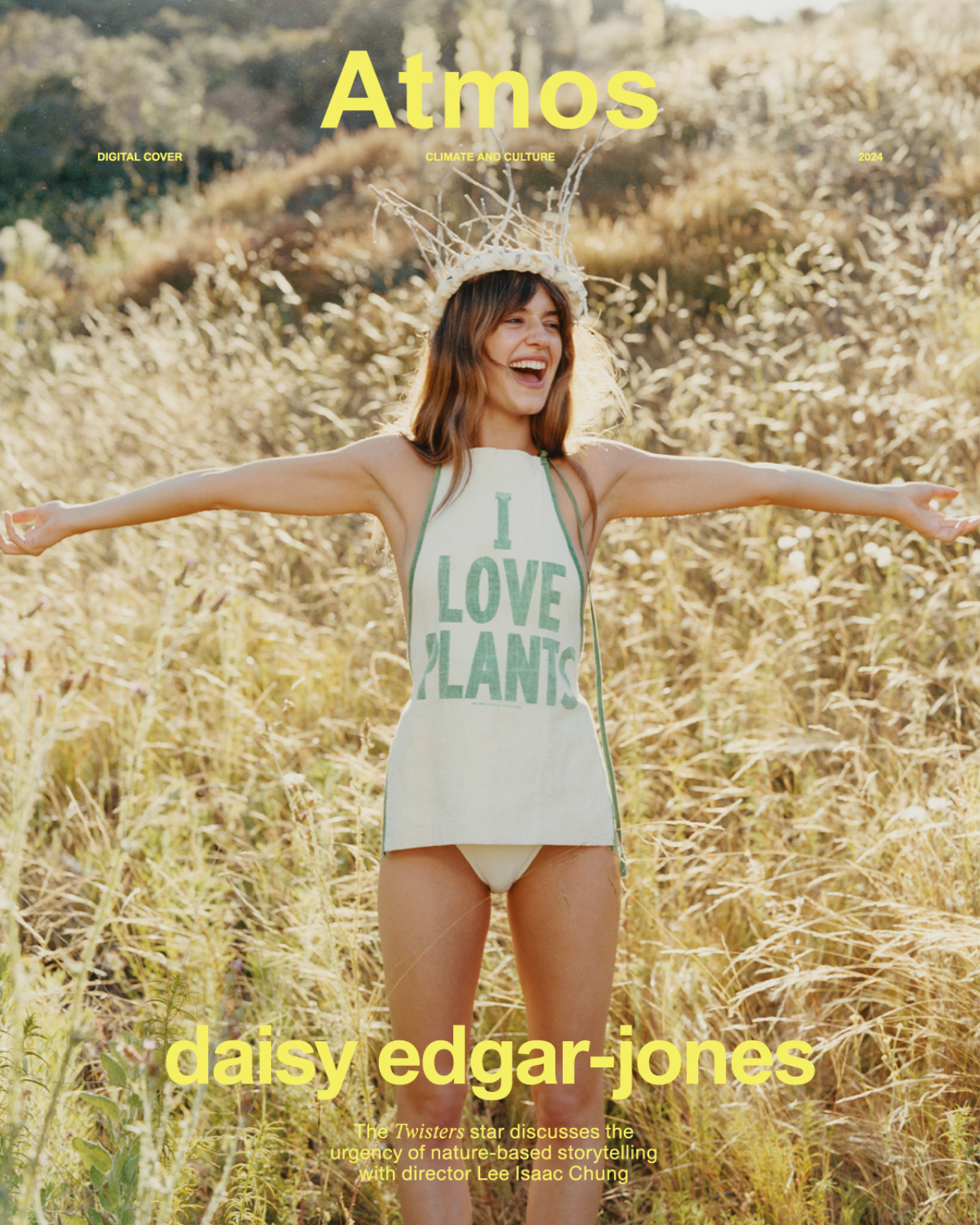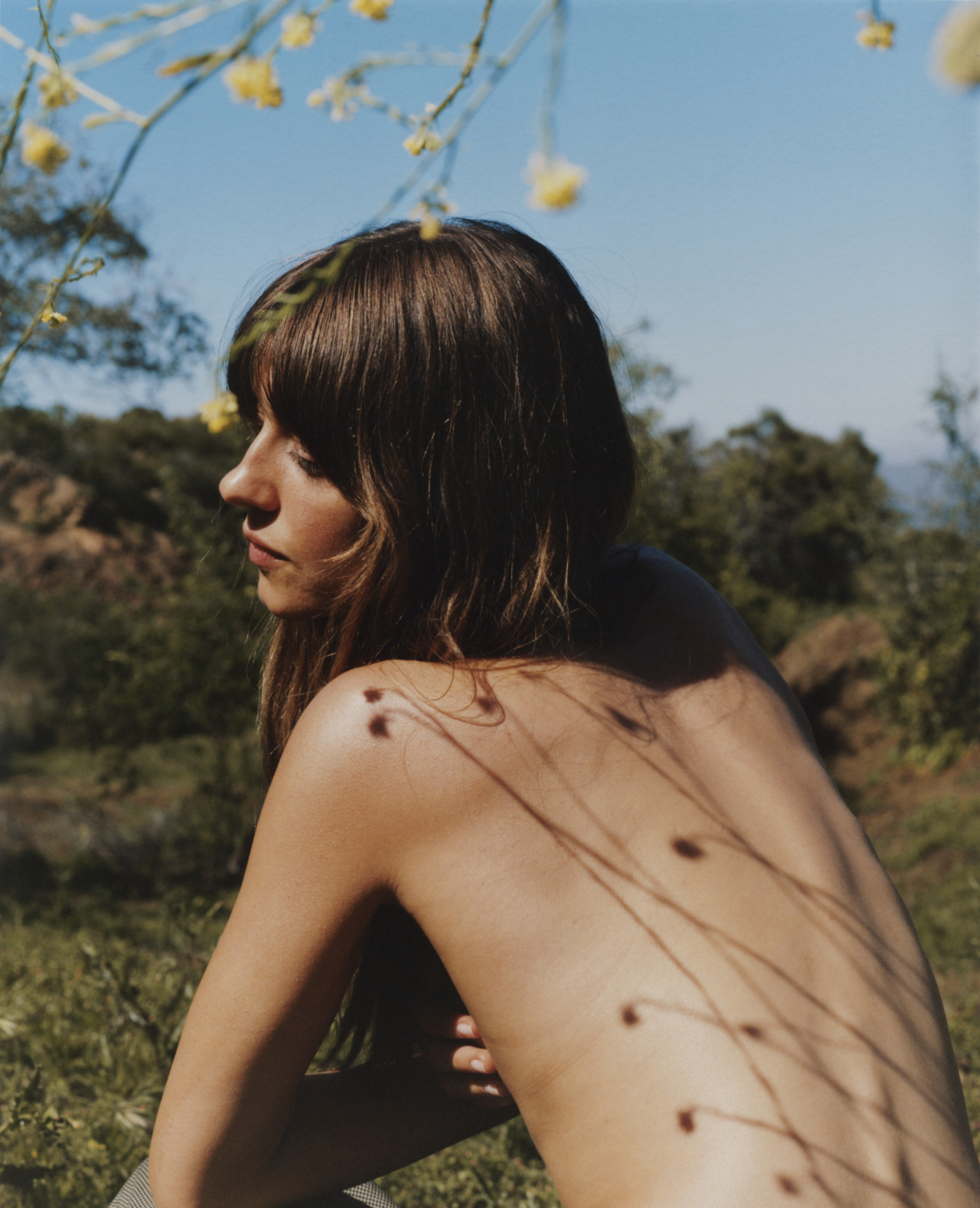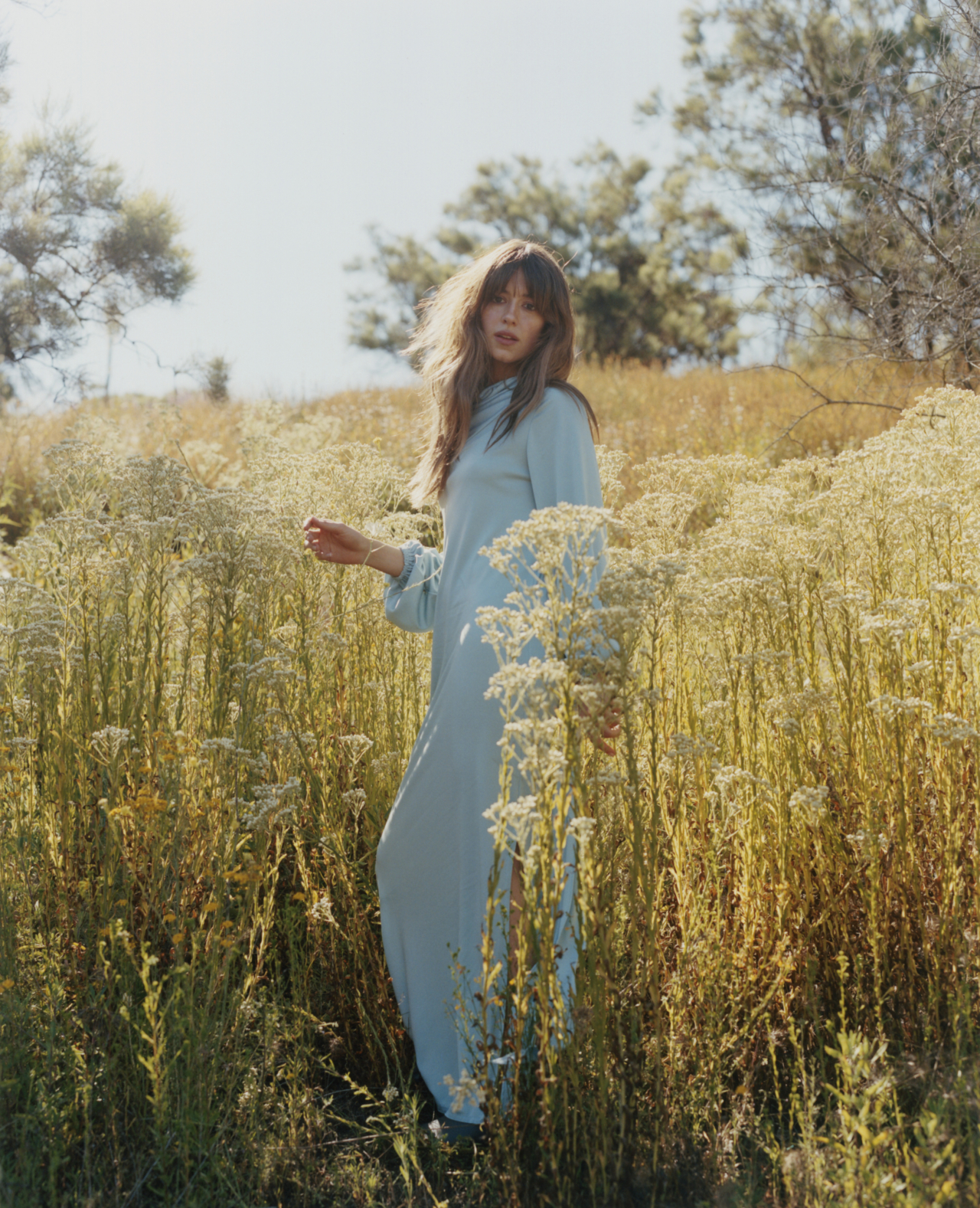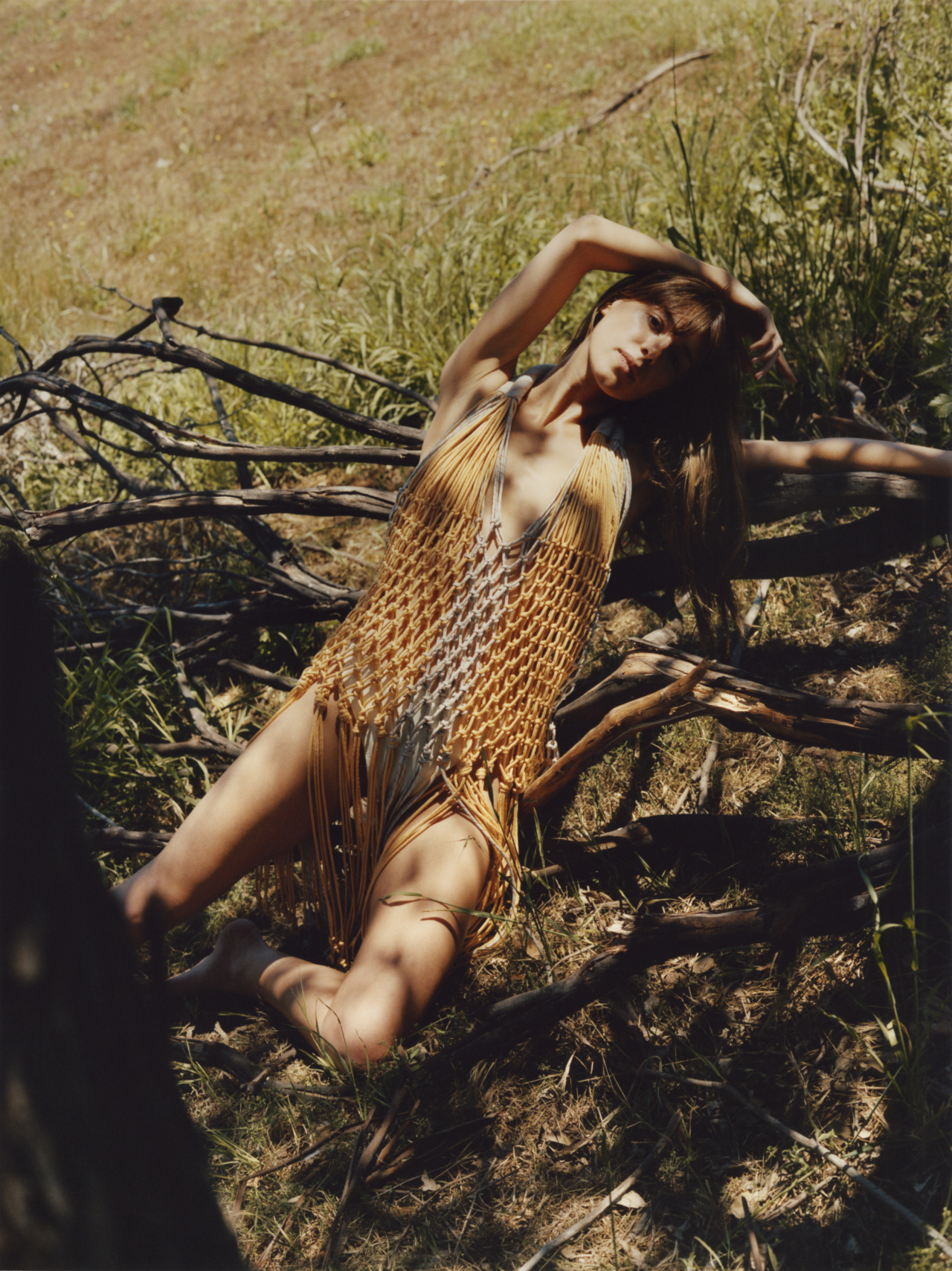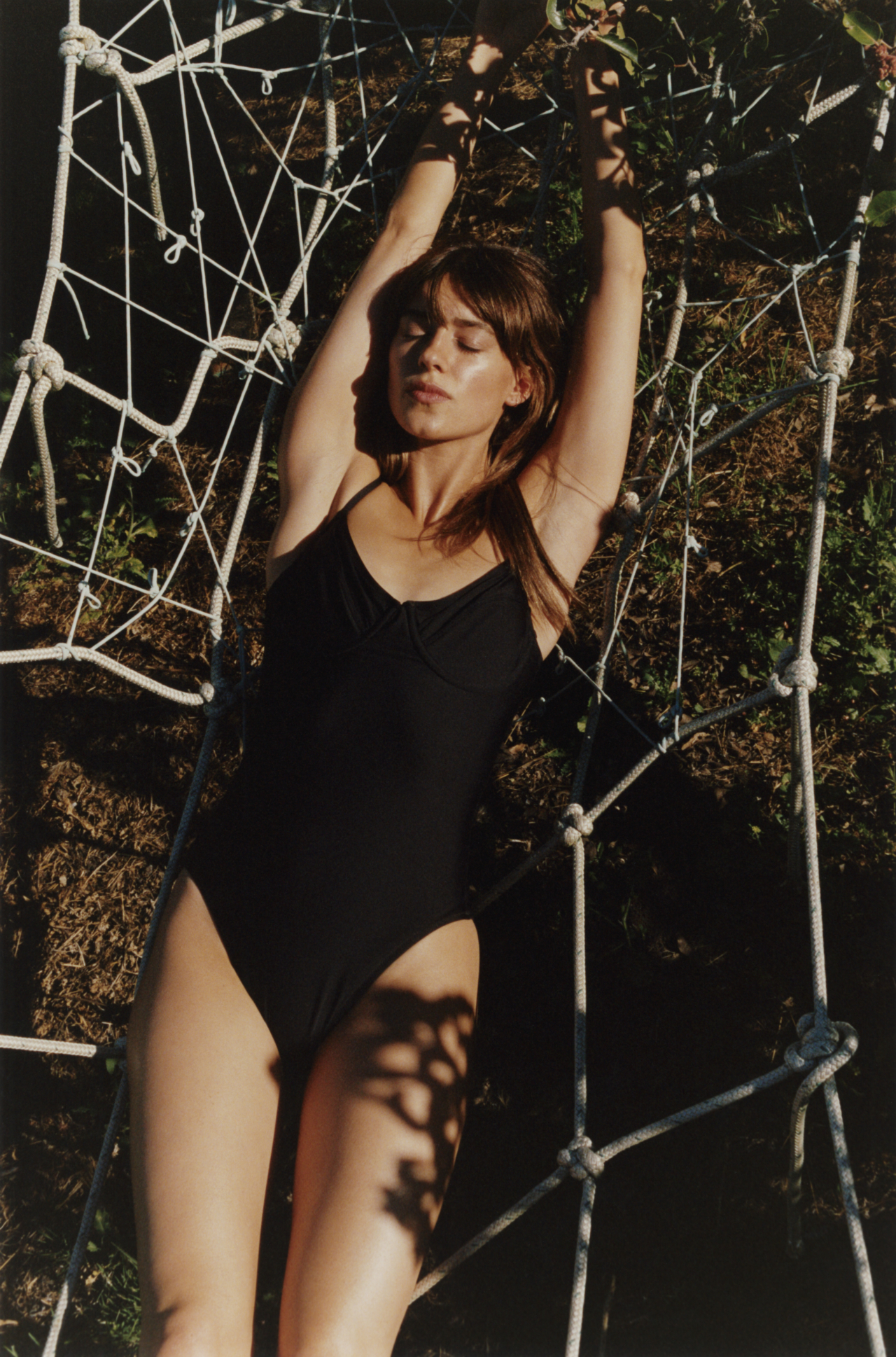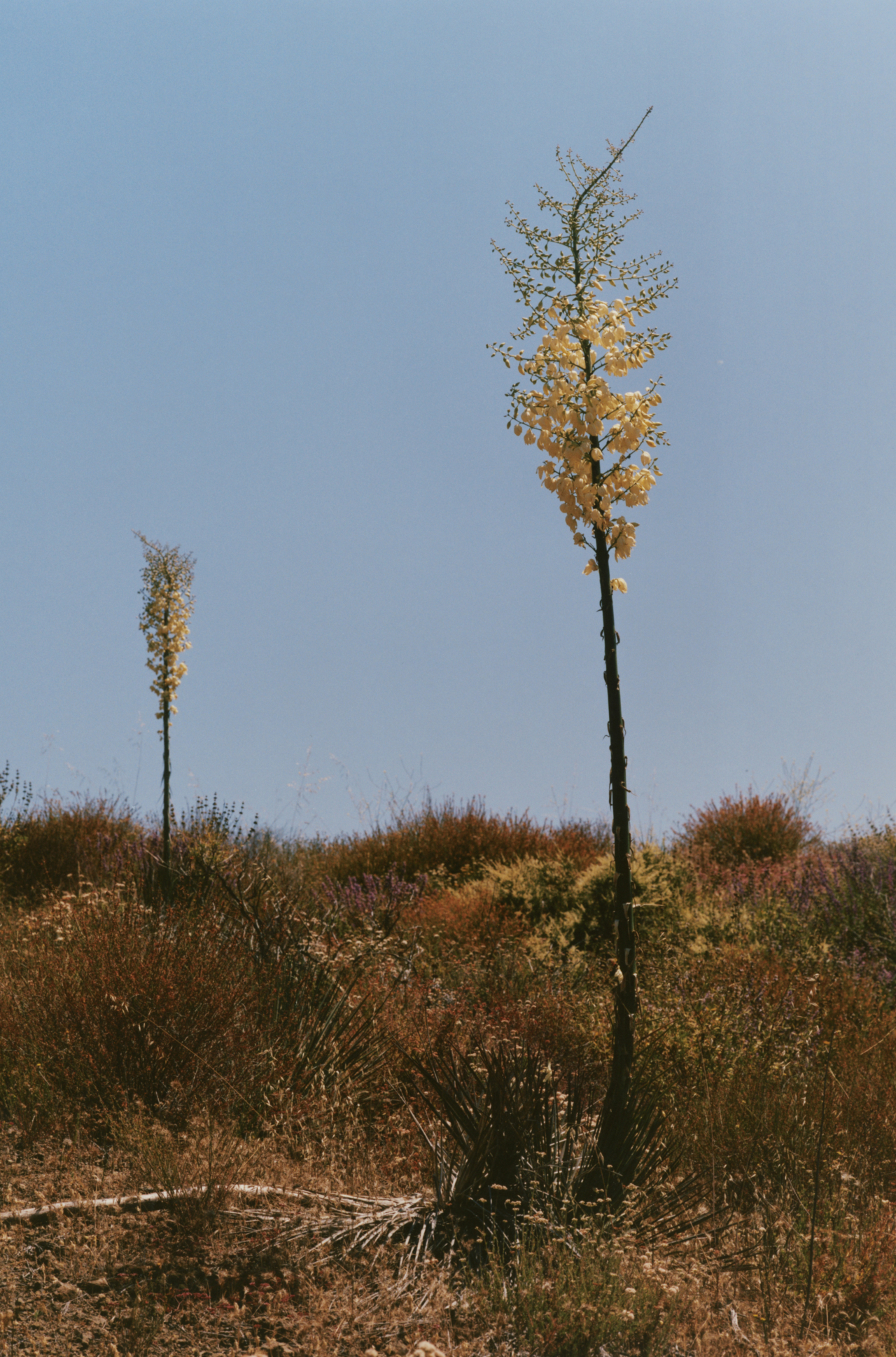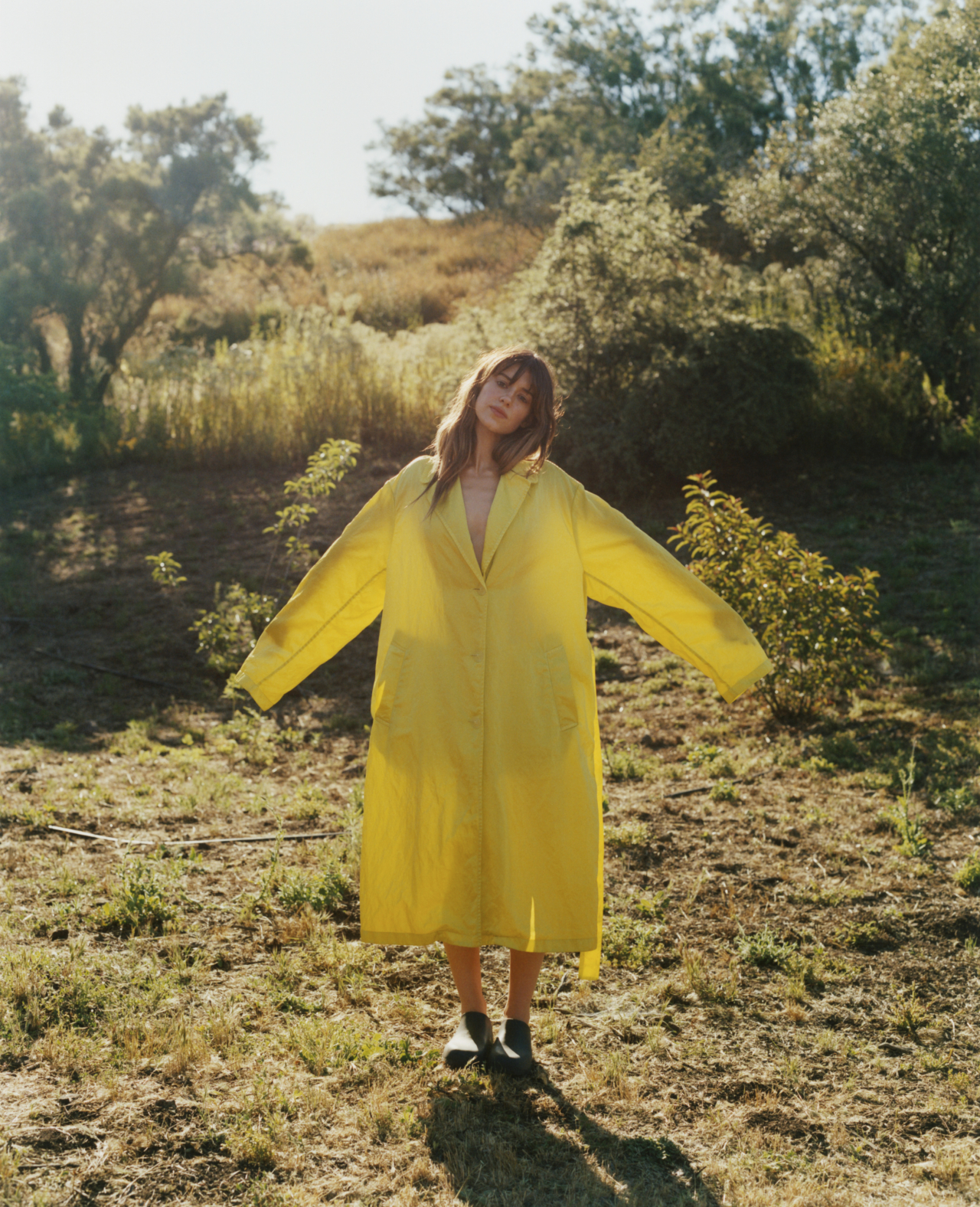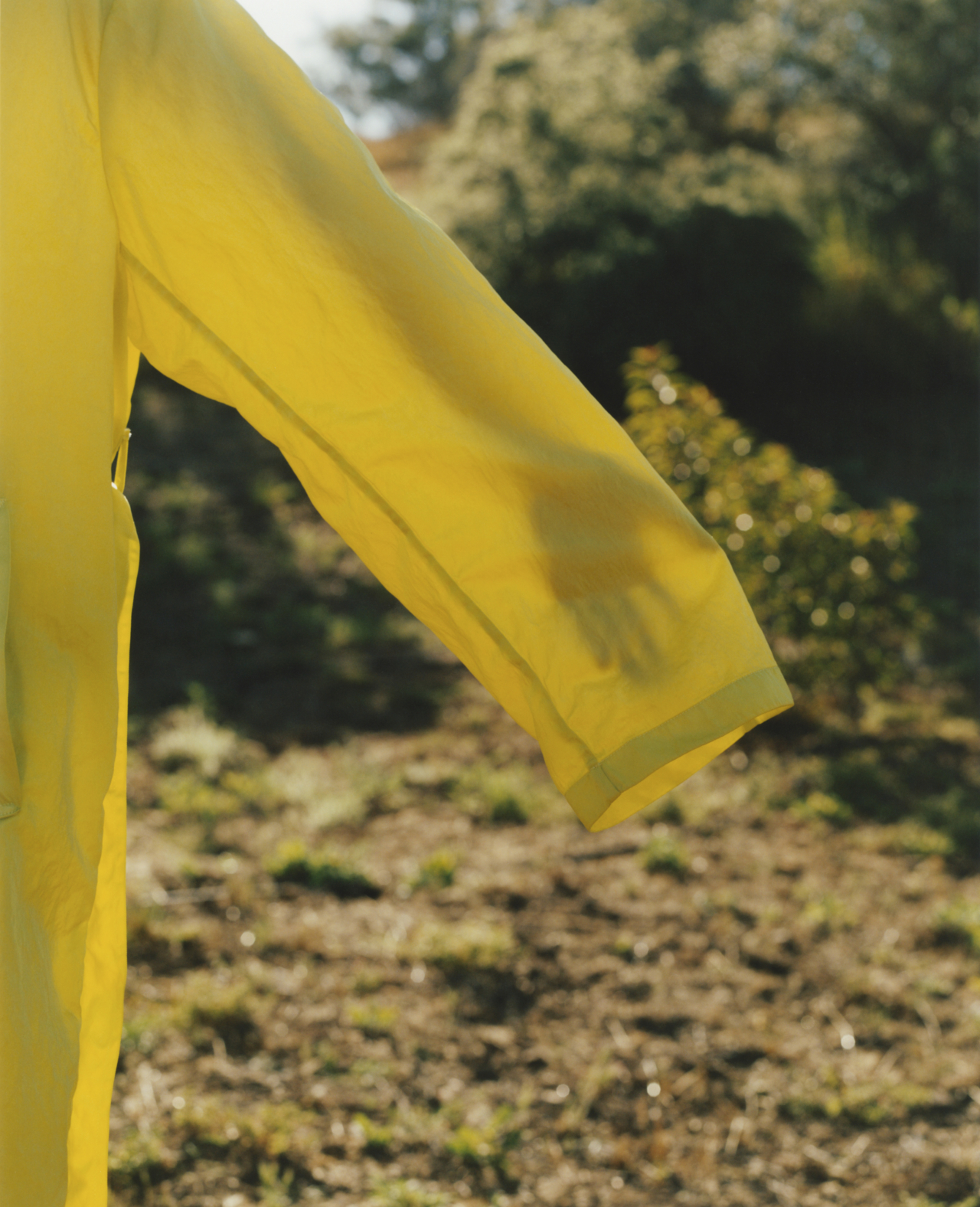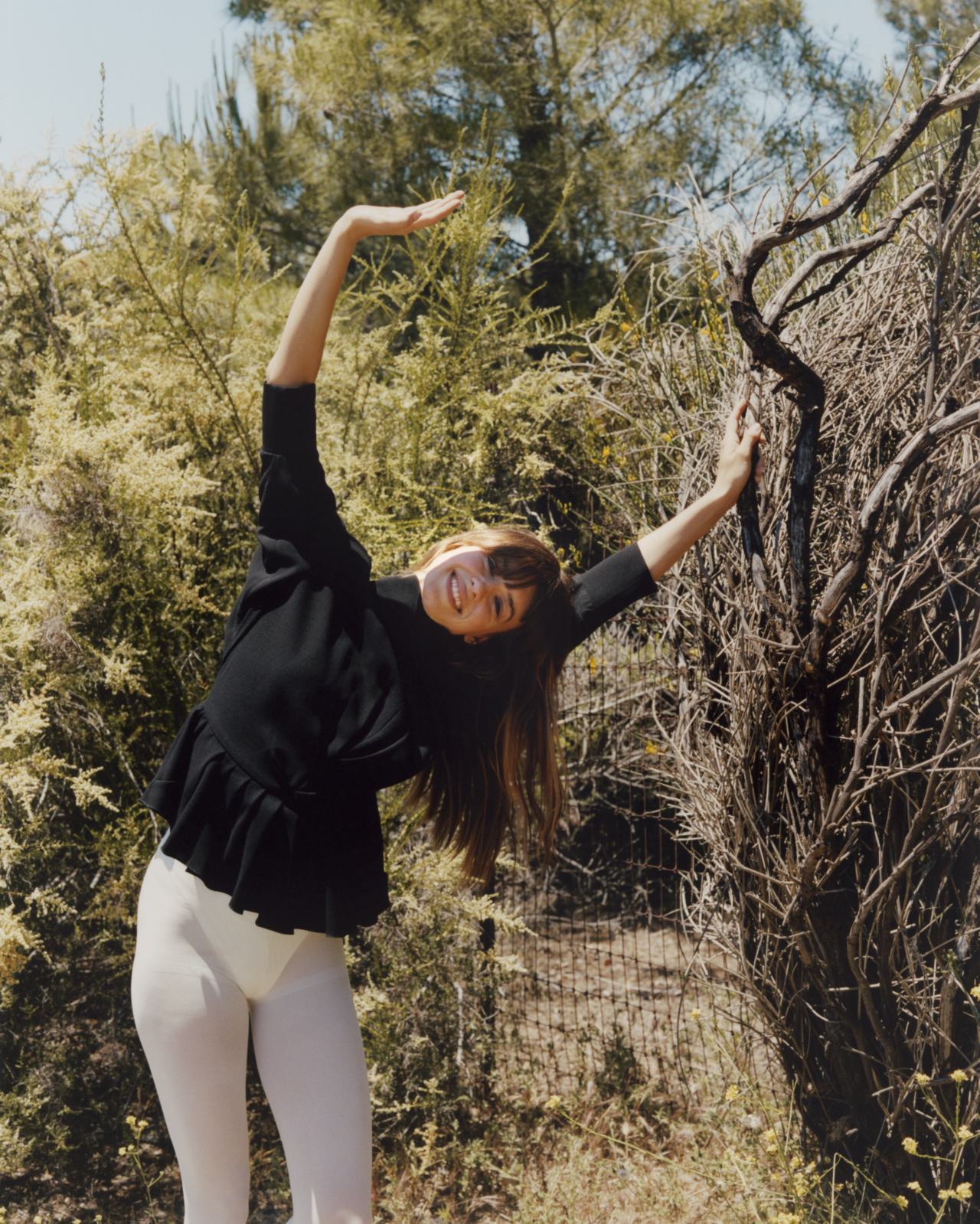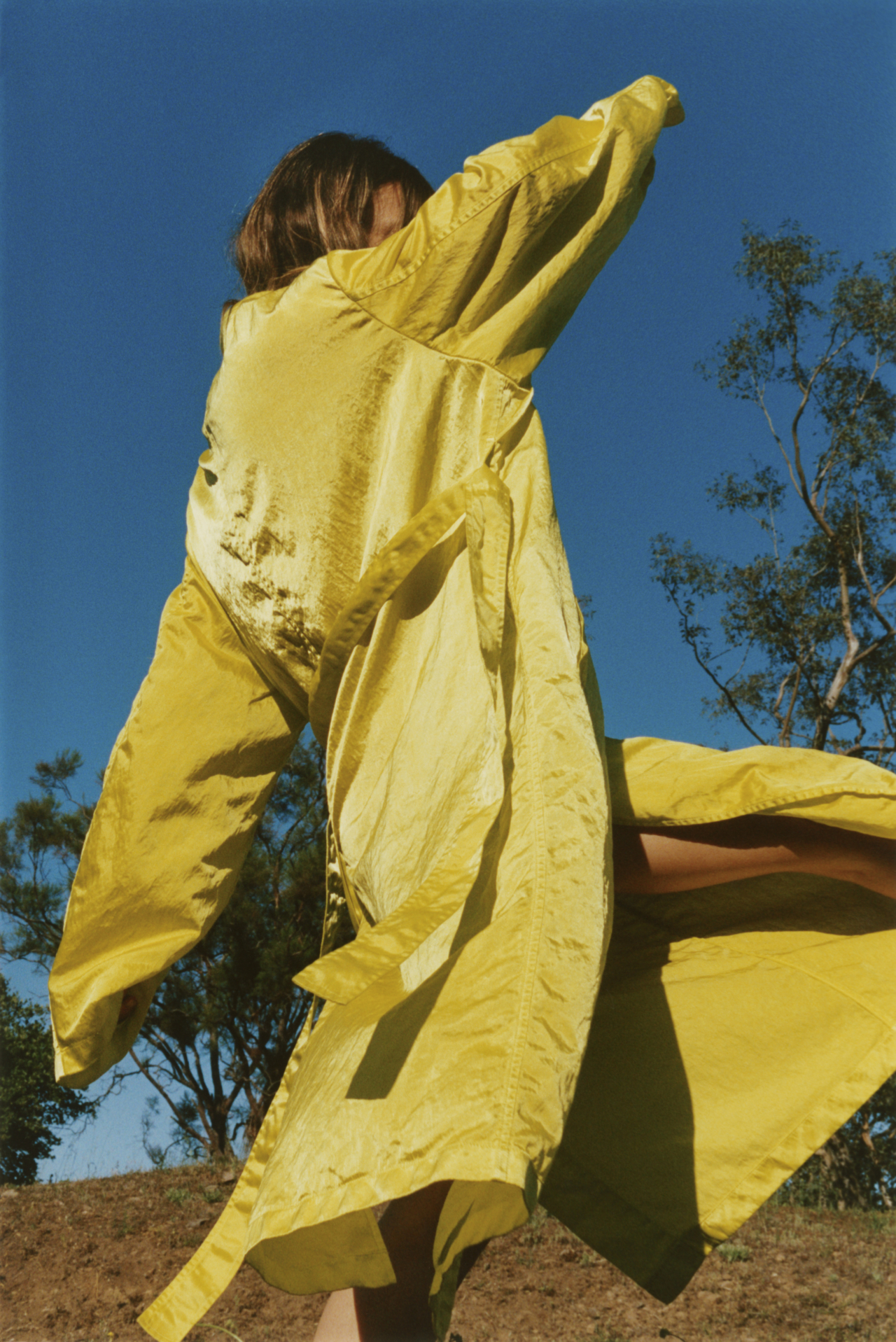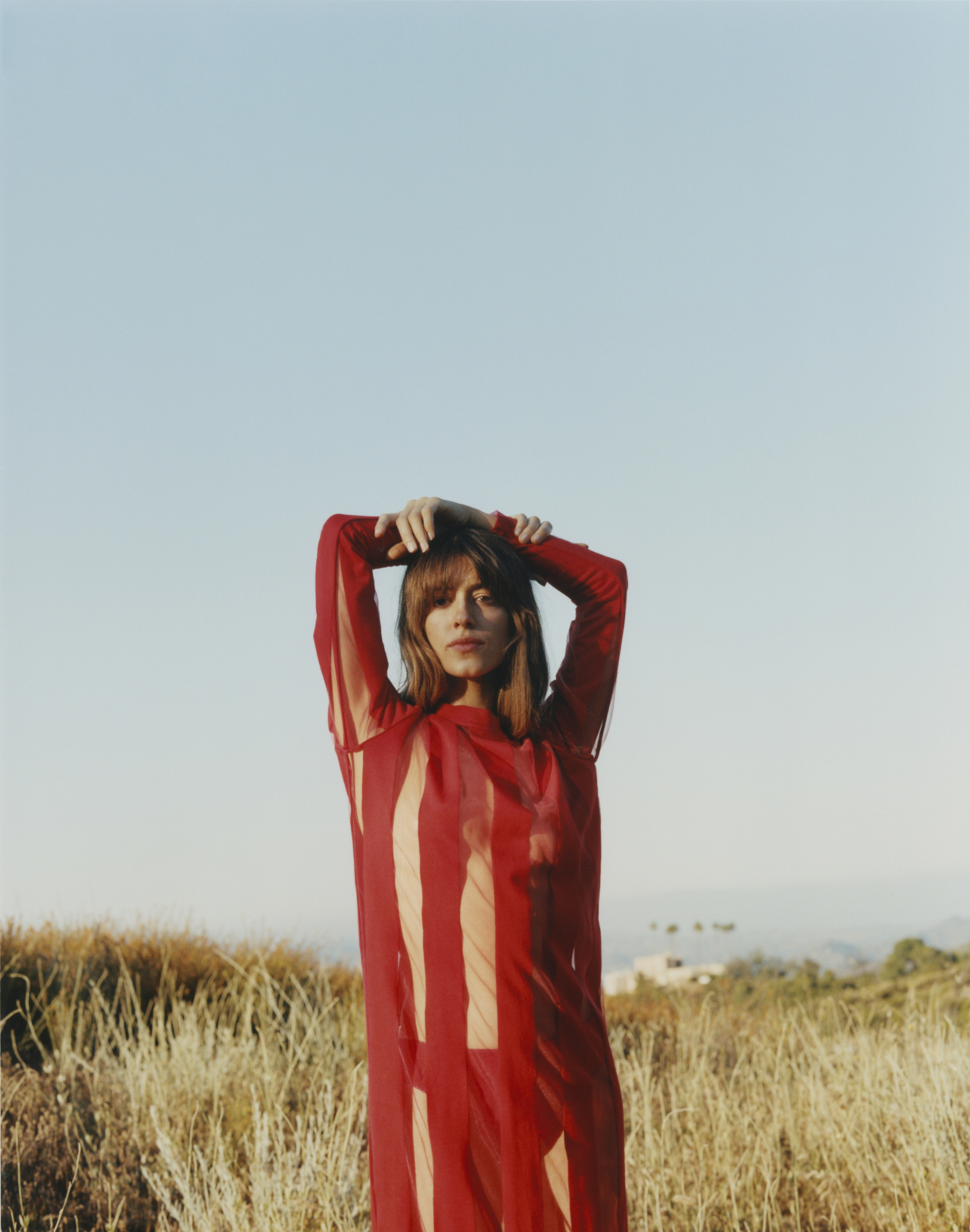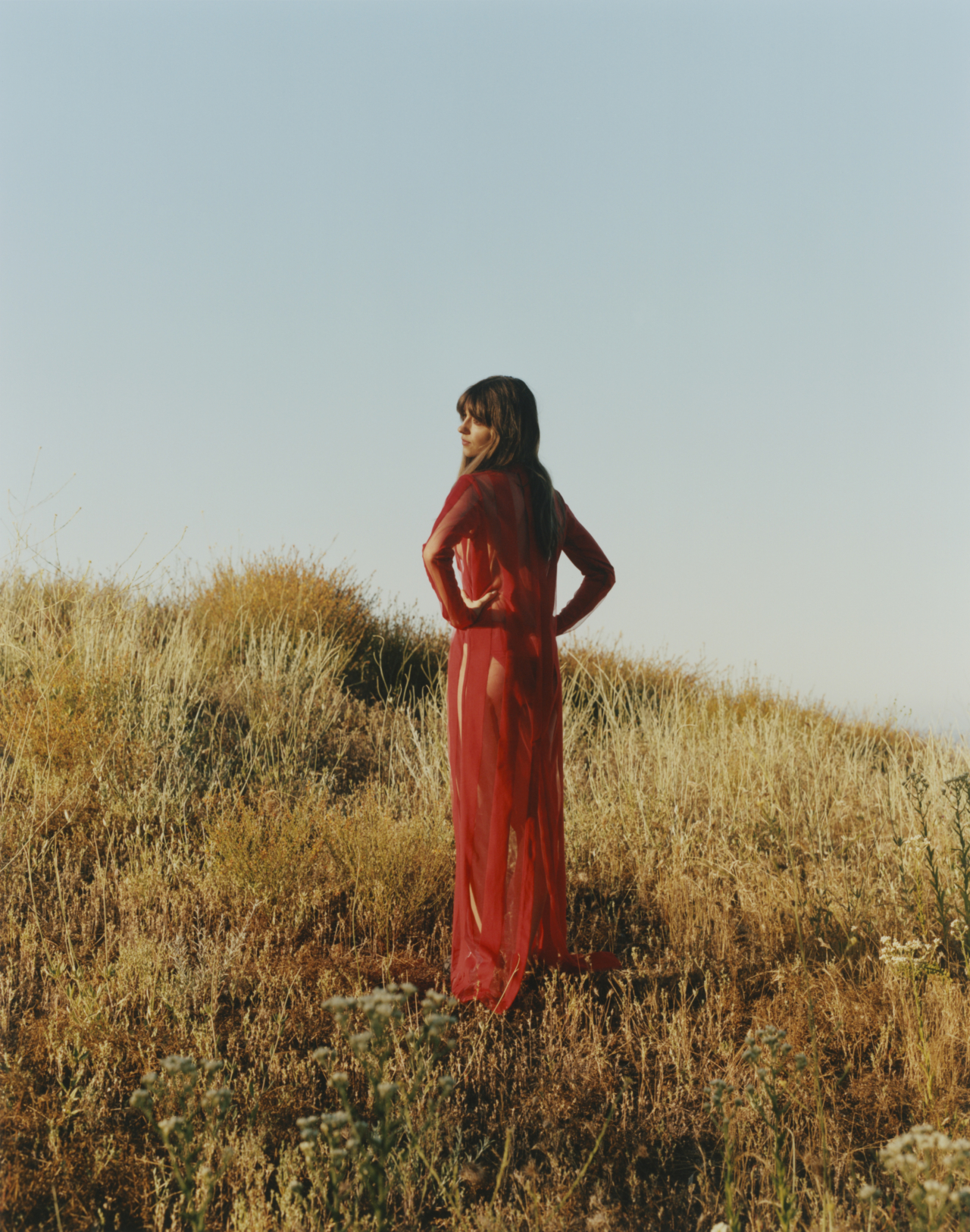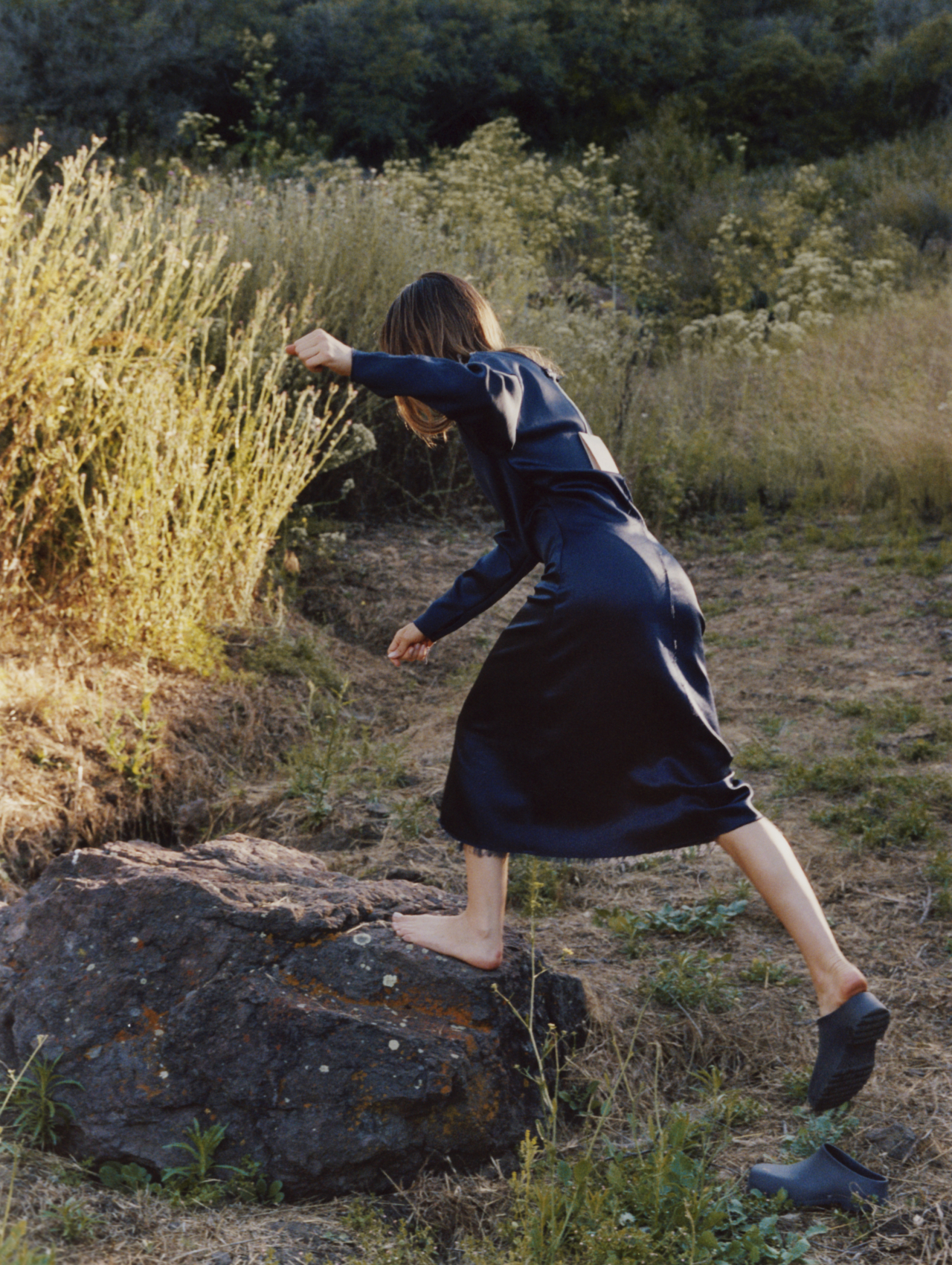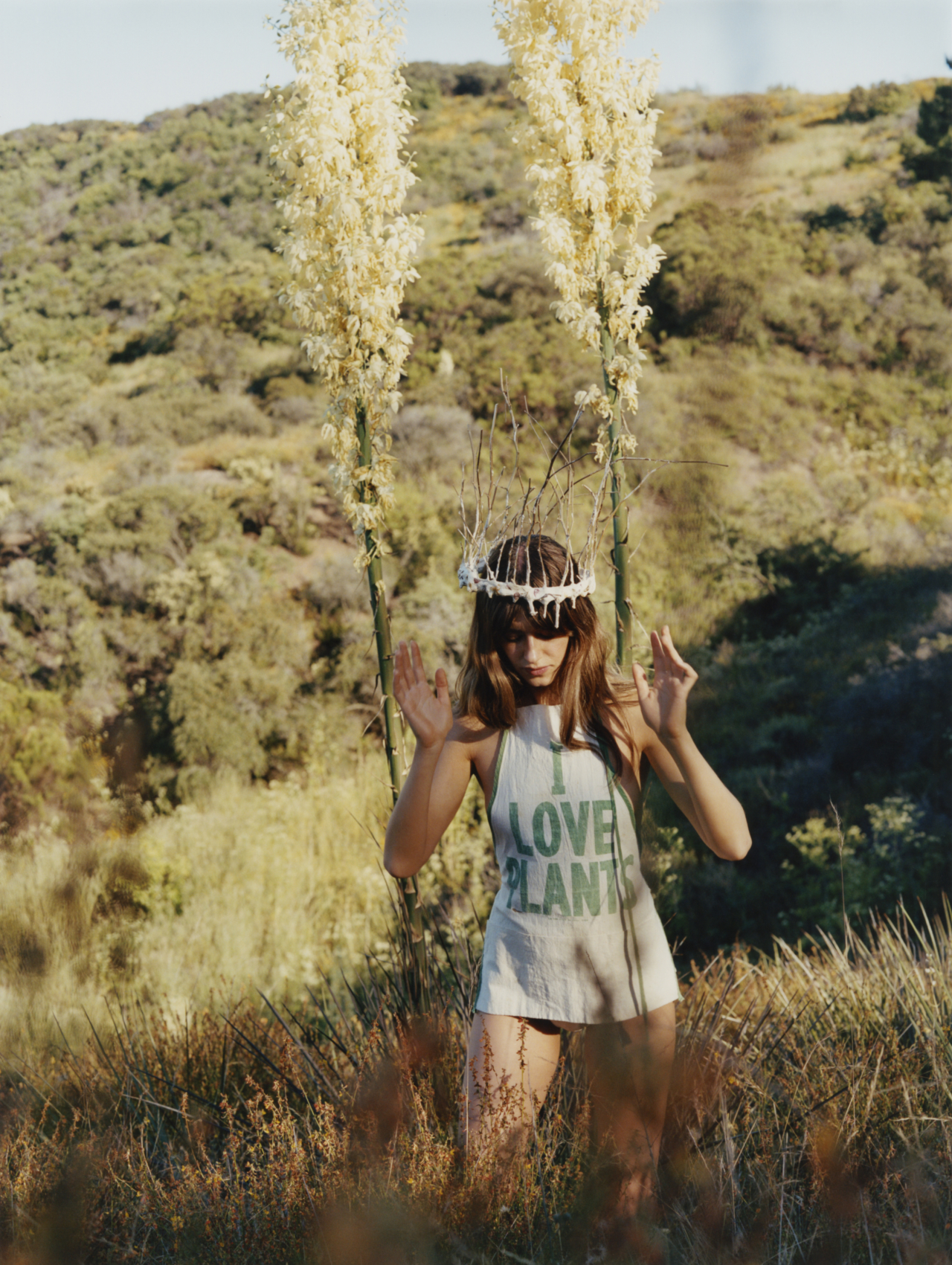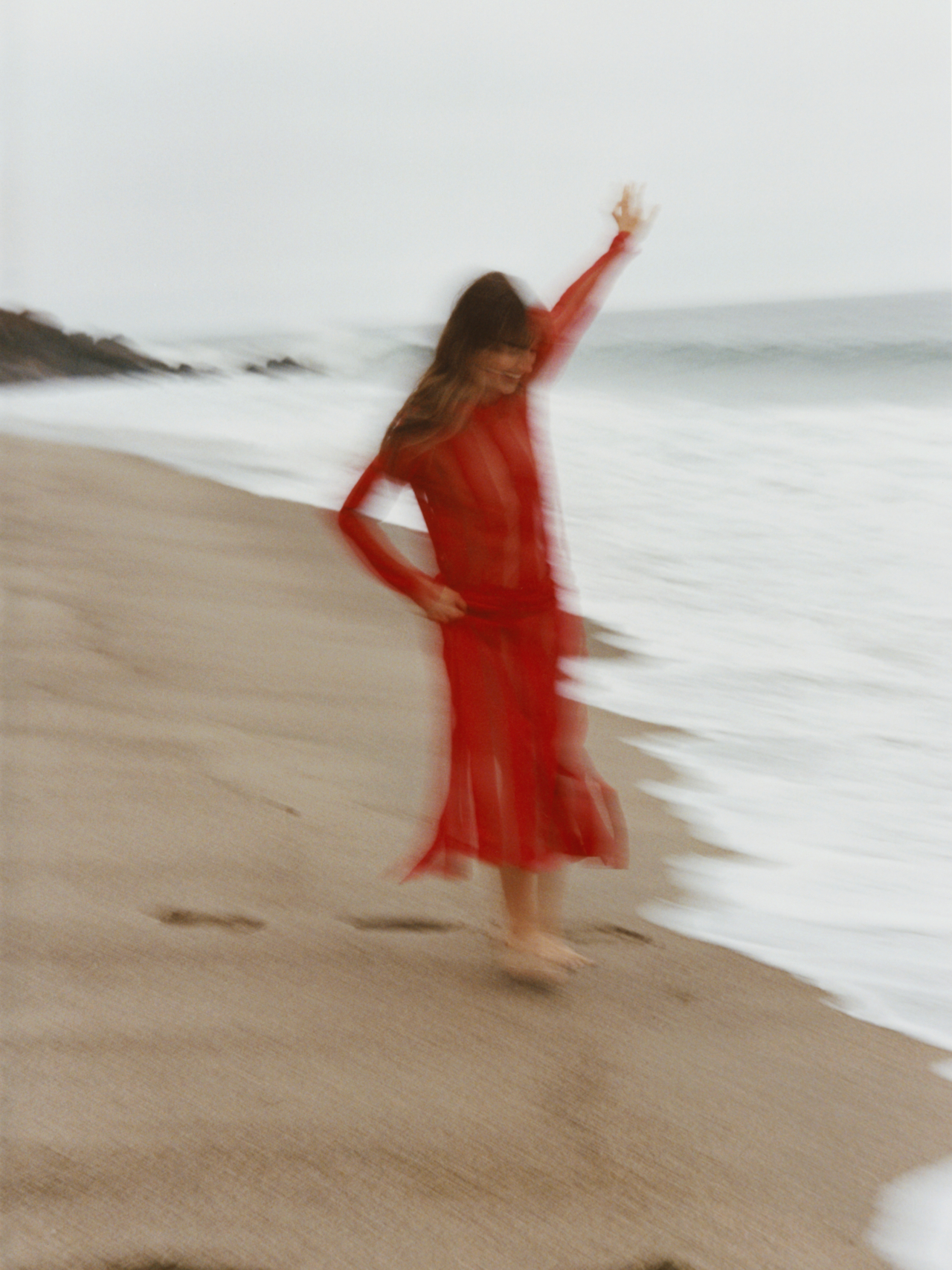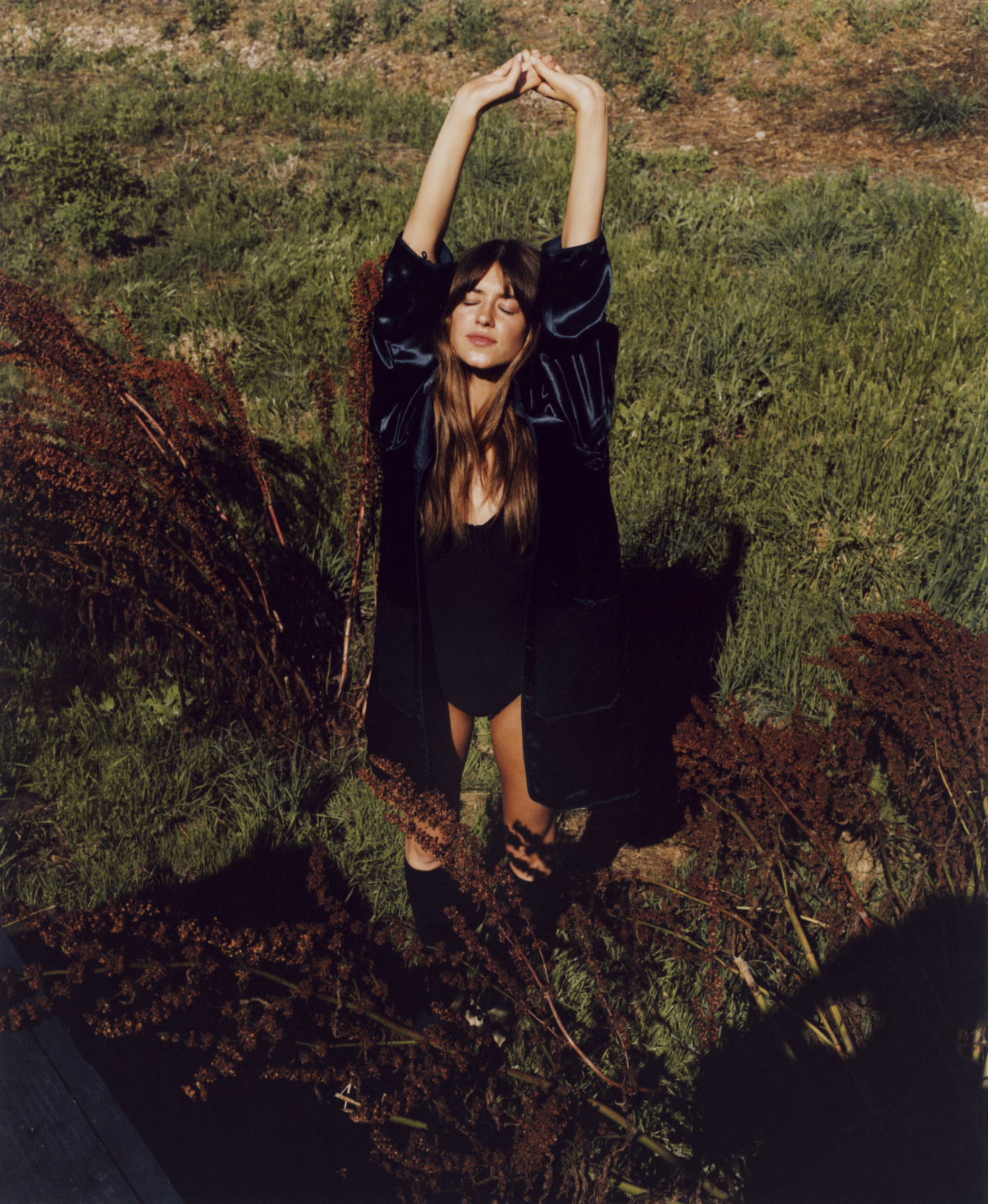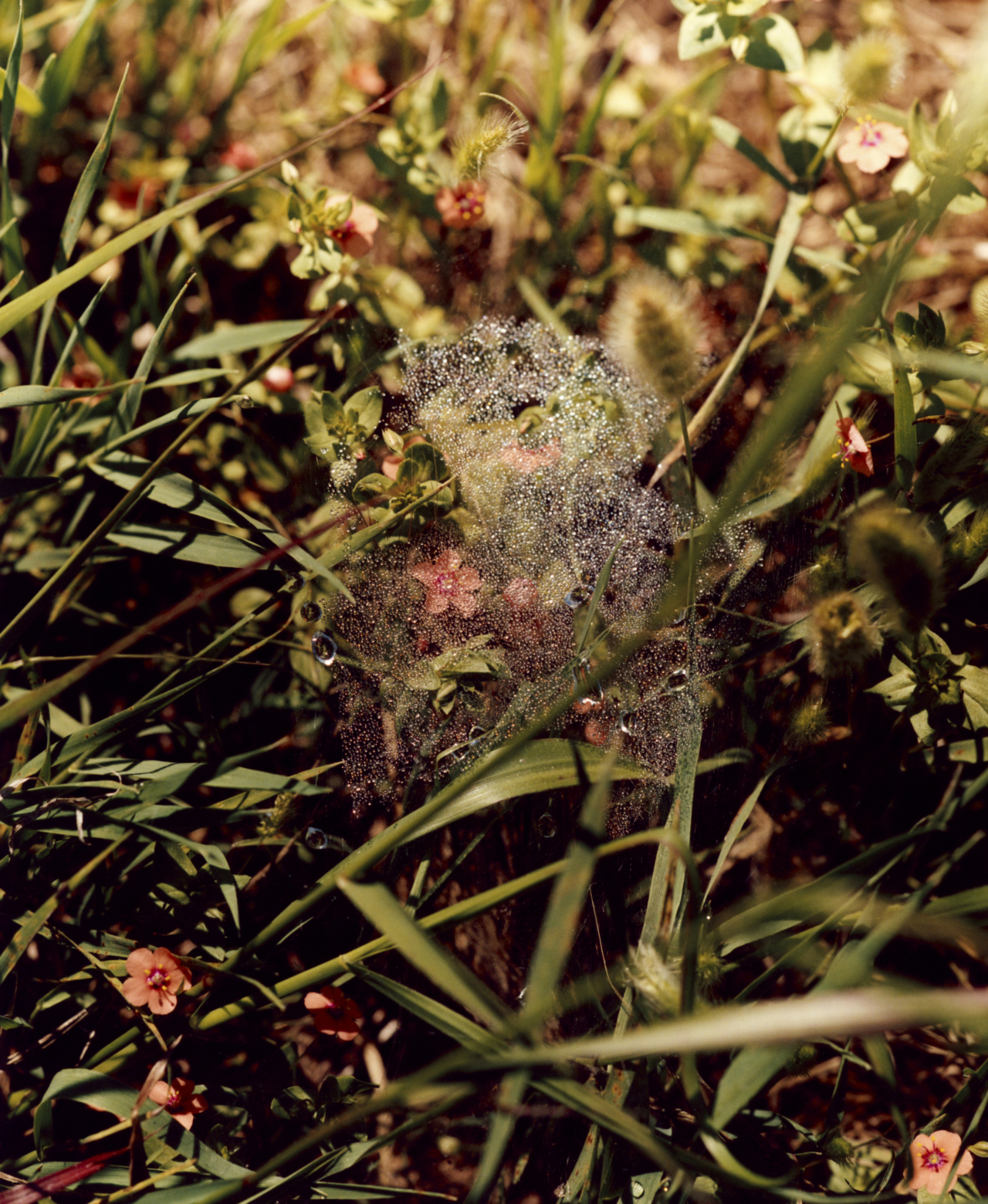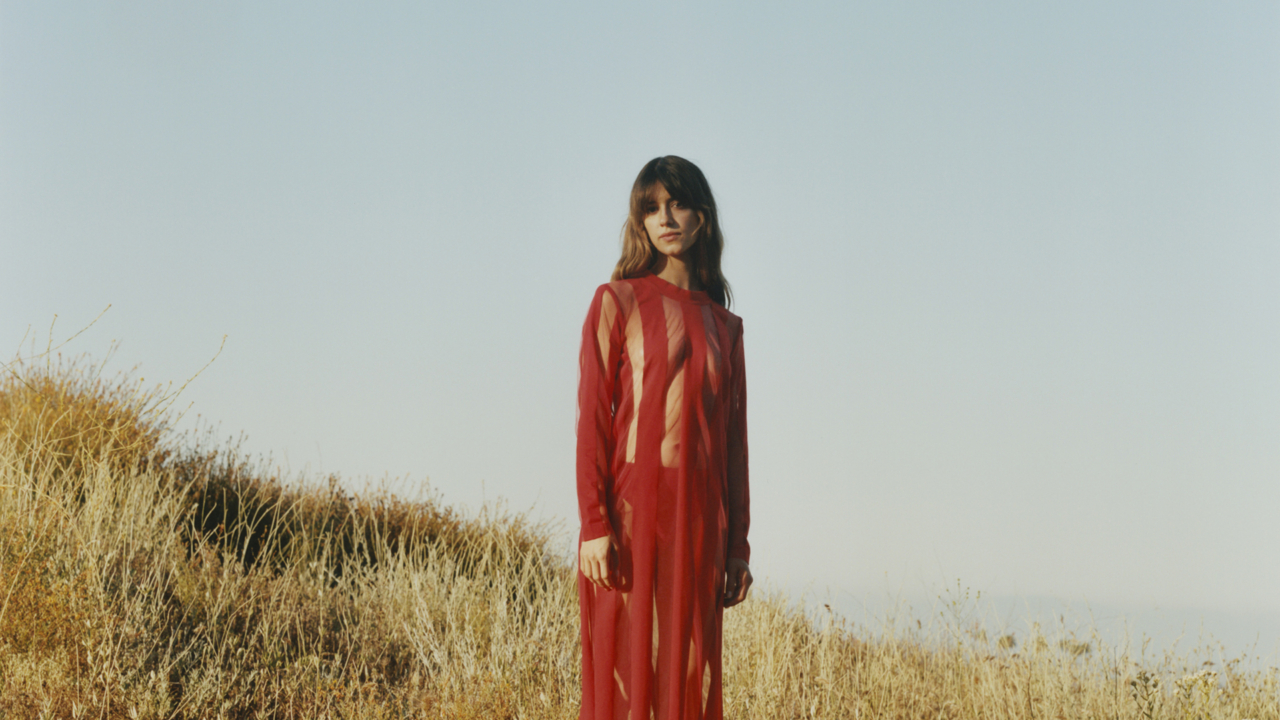
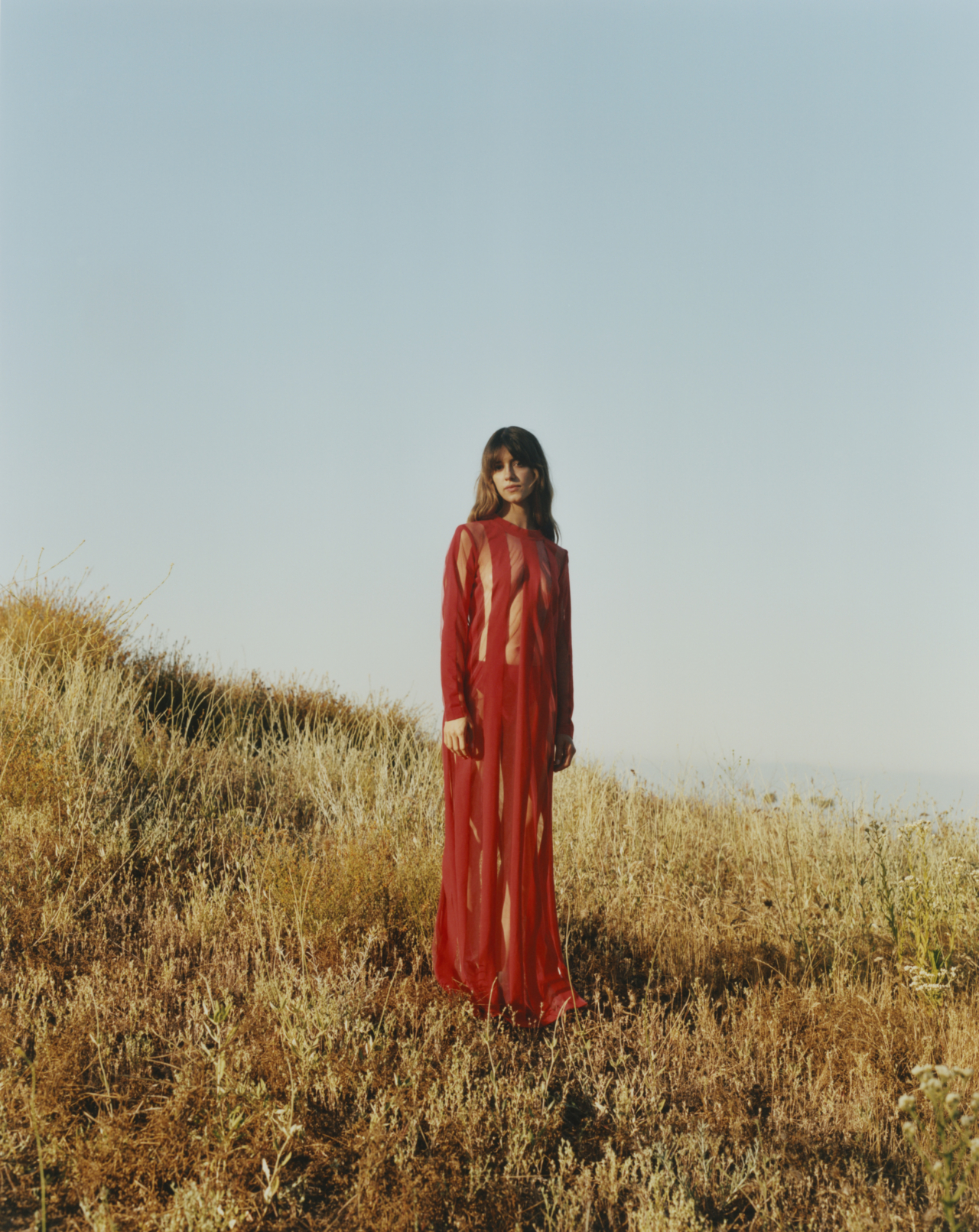
Words by Daphne Chouliaraki Milner
Interview by Lee Isaac Chung
Photographs by Jeremy Everett
Styling by rachael wang
It’s not unusual to see actor Daisy Edgar-Jones surrounded by vast, untouched nature. In Where the Crawdads Sing, Edgar-Jones’s character, Kya Clark, lives among lush, green swamps with filming taking place in New Orleans, Louisiana. And in her newest film, Twisters, which premieres tomorrow, the actor, who plays storm chaser Kate Carter, travels across the vast red plains and low-lying hills of Oklahoma.
Twisters, a film by Lee Isaac Chung, director of Minari, that serves as a standalone sequel to the 1996 film of the same name, follows the story of Carter, a former storm chaser haunted by a devastating encounter with a tornado during her college years, who now studies storm patterns safely from New York City. After she is drawn back to the tornado-ravaged plains by her friend Javi (played by Anthony Ramos) to test an innovative tracking system, she meets Tyler Owens (Glen Powell), a social media superstar known for his daring storm-chasing escapades. As storm season peaks and multiple tornadoes converge over central Oklahoma, their lives intertwine in a desperate struggle for survival.
Edgar-Jones has been working as an actor since the age of 17—five years later, at 22, she landed the life-changing role of Marianne Sheridan in the Emmy-nominated television show, Normal People. Throughout her career, Edgar-Jones has gravitated towards characters with a deep love of the outdoors. Her approach to depicting their lives is thoughtful, considered, and honest. The same is true for her performance in Twisters. “I’m so grateful we weren’t in a studio with a green screen,” she told Atmos. “We were really out there on the red dirt of Oklahoma under this massive sky. It’s so incredible when you get a job that takes you outside.”

Twisters is as much about the awe-inspiring force of nature—of phenomena like tornadoes and storms—as it is about the resilience and adaptability of the human spirit; about efforts to live in harmony with our environment in the face of climatic fury. It’s also an undeniably timely film. As forecasters predict one of the most active hurricane seasons on record in the U.S., the film unpacks the real-life consequences of increasingly extreme weather on the communities most affected. The film is entertaining and spectacular with some degree of creative license, but it’s also a stark reminder of the very real dangers of climate change, and the value of informing viewers about its wide-ranging implications. “When we got to really learn the science behind tornadoes and study weather, it felt like we were given quite a weight of responsibility of accurately representing science,” the Oscar-winning director told Atmos.
Below, Chung is in conversation with Edgar-Jones about the urgency of nature-based storytelling, the significance of storms as both natural and emotional forces, and what films like Twisters can teach us about learning to live in harmony with nature.


Daphne Chouliaraki Milner
Climate change is such a key theme throughout Twisters, and nature plays a central role throughout the film almost as a character in and of itself. How did you approach that, both from a director’s standpoint and from an actor’s?
Daisy Edgar-Jones
One of the things that I’ve always loved about Isaac’s work is how well he captures the beauty and power of nature—as well as a reverence towards nature—in his films. I think it’s amazing how the characters in our film respond to tragedy and disaster, and also how the communities come together to help and look after one another. It’s the power of tornadoes and storms, and the effect they can have. The film really highlights how, when we come together, we can make a big difference; and about how important being a little more community-led is [with regards to] looking after our planet.
But also, even in the making of our film, there was a real push to try and make it eco-friendly. The green aspect of our filmmaking was in the back of our mind throughout, which was a really good thing. And moving forward in projects, I would also want to encourage that in every production I do.
Lee Isaac Chung
Something I found really exciting about this project was the chance to immerse audiences into nature and natural phenomena that are much bigger than ourselves. That’s the relationship we need to have with nature, where we really see it as something that is much bigger than us, but also something that defines us and brings out who we are as people. Daisy, I don’t know if you would agree that, when we got to really learn the science behind tornadoes and study weather, it felt like we were given quite a weight of responsibility of accurately representing science. I don’t know many other projects where that’s an opportunity.
Daisy
I totally agree.

Lee Isaac
Building on what we were saying, at a certain point, the script was talking about defeating a tornado—and I felt a little weird about that. So, we were trying to figure out what’s the best way to talk about what’s going on in the story. And I think it might’ve been your idea that we say we’re taming it. Do you remember that? I’m curious about your thought process around all of that because I thought it was a great discussion that we were having at that time.
Daisy
Yes, the driving force of Kate is this: we want to find a way to harness the storm or tame the storm so that, whilst acknowledging its power and not destroying it. Because that could have a ripple effect that we don’t know. Instead, it’s about working alongside it, so it does less damage to communities.
For me, it didn’t make sense that someone who loved this phenomenon so much would then want to do something violent to it; something that could destroy it. Storms are a natural beast. When it comes to storms, they have no incentive, there is no malice; there’s no want to destroy or hurt. The more I worked on this project, the more I realized what a great metaphor storms—and tornadoes in particular—are for emotional turmoil; for everything. For Kate, it felt right to not destroy the thing that she’s running from, but rather be in harmony with it. Because the tornado represents not just a physical phenomenon, but also her emotional arc.
“When it comes to storms, they have no incentive, there is no malice; there’s no want to destroy or hurt.”
Lee Isaac
As a filmmaker, I definitely felt that, too. People have asked me what it was like to work on this movie, and I would say it felt like being in a tornado in many ways. Did you also feel that you went on a journey as you were making this film?
Daisy
With every film, it feels like such a feat that anything gets made really. There are so many moving parts that it does feel like you’re going into a storm. The question is always: Can you survive it? In Twisters, storms were also such a [big] part of our experience filming in Oklahoma. The absolute battle to get a day complete because of lightning strikes was so funny.
Did you feel that way, Isaac? Was there ever a point where you thought, “Oh gosh, will we get this movie made?”




Lee Isaac
Absolutely. As we were making this movie, I felt that it was necessary for us to confront nature or to work alongside nature because that’s what the movie was about. Did you feel like you were falling in love with the environment and working outside in that way?
Daisy
I really did. One of the things that I love most about these characters in this film, and that community that we got to know in Oklahoma, is the shared passion and obsession for something—in this case [the weather]. It’s really infectious. I remember really feeling that with the storm chasers I met during filming; that real infectious passion for something that I take for granted every day. After we began to talk about this film, I suddenly started taking a lot more notice of the cloud formations or how high the sky looks in Oklahoma. The clouds felt so much higher. And obviously, because we both have gone chasing now, I really did start to get that obsession a little bit.
“As we were making this movie, I felt that it was necessary for us to confront nature or to work alongside nature because that’s what the movie was about.”
Lee Isaac
Were there any projects that you were looking at to inspire you and prepare you for this role?
Daisy
Fire of Love was a film recommendation that you made to me—I’d never seen the documentary before, but it was so helpful in truly understanding these two people who are obsessed with this thing—volcanos—that a lot of people probably wouldn’t quite understand. Not just the science of it, but also this need to get close to it despite the potential danger. And I think it also explores this need as a human to feel human. When you are up against a storm that could potentially wipe you out in a minute or a volcano that has such power, it really makes you feel alive. That was something that I really got from that documentary.
In terms of other references, I watched a lot of classic ‘90s films. I watched Thelma & Louise, I watched [the 1996 edition of] Twisters again. I watched Jurassic Park. What about you?


Lee Isaac
It’s funny, Thelma & Louise was really big for me, too. I watched a lot of Spielberg movies as well.
Before we filmed what ends up being the last scene in the movie where you’re facing off against the tornado, I remember you were reading a book on Greek mythology. I was watching you on the monitor and watching what you were doing, and I thought, “You really are like a Greek god.” How did reading that book—and reading, more broadly—play into what you were filming?
Daisy
I was reading Mythos at the time. The Greeks have such great mythology. It’s so visual that I remember Googling images of the Greek God of Wind. It made me think about how people often call tornadoes the finger of God, which is such an amazing metaphor of this phenomenon that, like a finger, is choosing what it’s going to destroy.
But you’re right, there is an element to Kate that is heroic, and Greek heroes are fascinating to me because they’re always so complex and flawed. In Greek stories, it’s a very dark world. Our film, despite it having lots of levity and fun, is also quite dark and tumultuous—specifically [regarding] Kate’s arc. There’s a lot going on for her.
“People often call tornadoes the finger of God, an amazing metaphor of this phenomenon that, like a finger, is choosing what it’s going to destroy.”
Lee Isaac
After making this movie, I want to add more weather and weather effects into whatever I make next because rain and wind is such a great textural element to film and it’s such an emotional thing as well. Did you find that these elements we were throwing at you helped bring out performance? And is it something that you would explore again in the future?
Daisy
I know exactly what you mean. I think the great thing about those scenes is that you can’t really think too much. I can be quite a detailed thinker to the point that it can get in my way. And actually there was something amazing about scenes where you’re just literally getting ice lobbed at you as well as rain and wind. It forces you to get out of your head and just be. I definitely think moving forward that I want to be able to just be in it.

Lee Isaac
There were many scenes where we set everything up, and I’m pointing at a blue sky telling you there’s a tornado over there. With some shots, I’d think “this could be kind of clunky; it’s never going to work.” But then you would do something and you would make it feel so real for me when I was looking at the monitor. Even without those elements, you were still able to bring that reality.
Daisy
Thank you. You also created space for that in such a brilliant way. I loved your freedom to be collaborative, to bring our ideas, and to also play. Not many directors give space for that. I knew that I was in safe hands even if my reaction to a tornado was a bit bigger than it needed to be.


Lee Isaac
First of all, thank you for that. I was always telling you, “You cannot overact against a tornado.”
Daisy
Even watching it back, I’m like, “Wow, that was scary. That was really scary.”
“We need to see nature as something that is much bigger than us, but also something that defines us and brings out who we are as people.”
Daphne
You’ve both spoken about so many different references—from Greek mythology to studying weather patterns and meteorology. What was the prep that went into this film? What did the process look like for you both?
Daisy
It was a lot of learning, which was the funnest part of it for me. Isaac organized a trip for us to go to the National Weather Center Office, and we got this whole tutorial by a meteorologist on cloud formations and about how a tornado actually comes to be. We also had brilliant weather consultants who were constantly there to guide us and give us complex weather jargon five minutes before a take. What about you, Isaac? How did you approach your learning?
Lee Isaac
You recommended the podcast, Girls Chasing Storms. I would listen to that on my drives and I would watch YouTube videos of tornadoes constantly. I was not just looking at the tornadoes, but also how people react to tornadoes and how people behave during tornadoes. That was really an important part of the process. And adding to the National Weather Service lecture, all of us were so impressed by how many questions you were asking; how you were at the front of the class. We were all like, “Wow, she asked really good questions” and we all felt like bad students.


Daisy
I’m such a nerd for that stuff. When I was at school, one of the only things I remembered from geography was the names for various clouds. I’ve always found weather, in particular, fascinating. And being a Brit, we do have a weird fascination with weather where we talk about it constantly despite the fact our weather is massively benign. It’s so uninteresting, nothing happens. It’s just different shades of gray. I also remember having the most vivid tornado dreams ever—these crazy tornado dreams.
Lee Isaac
Oh, no kidding. I didn’t know that.
Daisy
You told me this one fact: If a tornado is standing still when you’re looking at it, run because it means it’s coming towards you, whereas if it’s going backwards and forwards, you’re fine. And, the day after you told me, I had this dream where I was looking at a tornado and then it stopped still and I was like, “It’s upon me.”
Also, filming in Oklahoma, I’ve never experienced being asleep and waking up to my windows rattling like that before. The wind was so strong that our entire sets were destroyed. Isaac, you grew up in Arkansas, so I suppose big storms have been a big part of your life for a while. But for me, I rarely experience them and when you hear thunder that loud, you’re like, “Wow, that is omnipotent. That is something so huge.” One day, when we were filming, a massive mesocyclone cloud—or they called it the mothership—formed behind us. Glen and I must have looked like two of the worst storm chasers you’ve ever seen because we were looking in the wrong direction to where the storm had actually started. But then it produced a tornado and you went and chased it, which is cool.
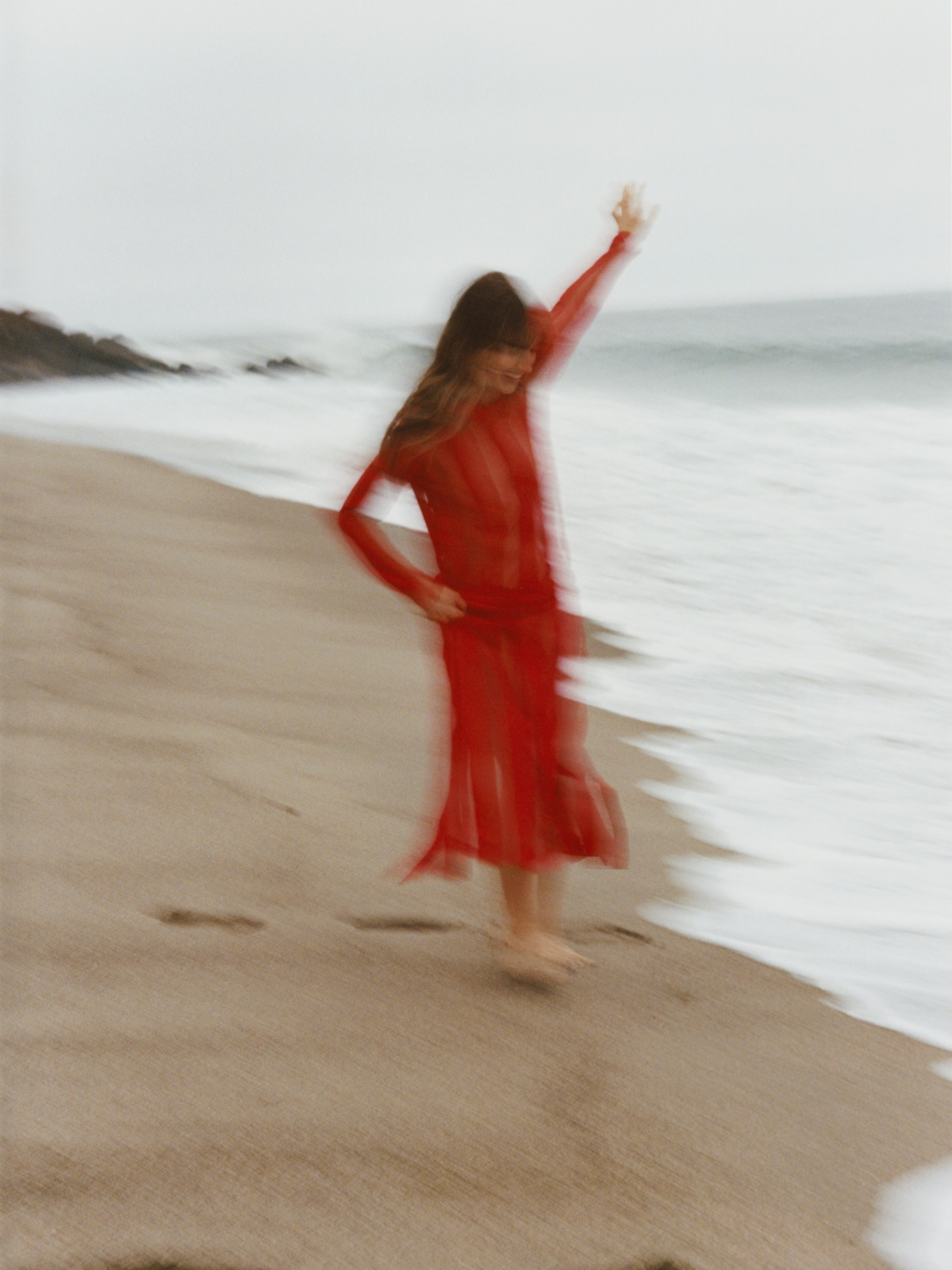
Lee Isaac
That day was really magical. I remember we had all kinds of clouds on that day. I’ve been telling people that we had so many wonderful days where we started before the sun rose and then we’d be outside all day long until sunset. We all really bonded under that kind of working situation.
Daisy Edgar-Jones
I’m so grateful we weren’t in a studio with a green screen. We were really out there on the red dirt of Oklahoma under this massive sky. It’s so incredible when you get a job that takes you outside. When I did a film called, Where the Crawdads Sing, we were fully in the bayou of New Orleans and Louisiana. That was amazing just to hear and see nature and be amongst those colors. It’s also so cool that you shot it on film—there’s such a uniqueness to that red earth and that green in the colors of Oklahoma. Did you find film to be really important to capture that environment?
“I’m so grateful we weren’t in a studio with a green screen. We were really out there on the red dirt of Oklahoma under this massive sky.”
Lee Isaac
I really felt so. When we were finishing the movie and color correcting it, I was still pleased with that gamble that we took to shoot it on celluloid. Movie-wise, more nature for you in the future?
Daisy
I hope for more nature. That’s the thing that’s so great, isn’t it? The parts of the world we get to go to with our job. Even shooting for Atmos, I was out in the hills of Malibu and it was the most beautiful scenery. Would you say you’re a city man or a country man?
Lee Isaac
I’d say the inner me is a country boy, but I’m living in the city, which is just the circumstance of the work I do. But, I love the idea that movies can help me get back to the country. I’m hoping to do it again. Do you feel you’re a city person or a country person?
Daisy
I think I am a city person, but I grew up going to Ireland—and I’d love to see the green of Ireland on film. It’s so beautiful. Ultimately, I need a bit of both. I need to get out sometimes and be under a big sky to feel myself again before going back into the business and grind of city life. It’s a balance.


Photography assistant Jacob Messex Styling assistant Nycole Sariol Hair Cervando Maldonado Make Up Jo Baker Producer Michelle Kapuscinski Production assistant Max Reid, Chiara Seward
Editor’s Note: This interview has been condensed and edited for purposes of length and clarity.
In Twisters, Daisy Edgar-Jones Is a Force of Nature
